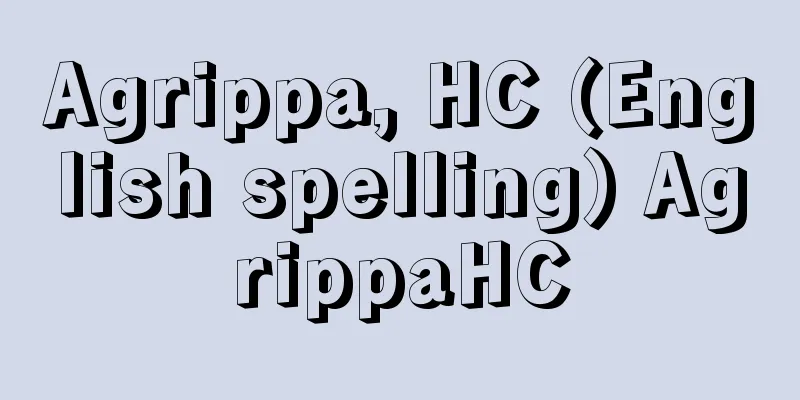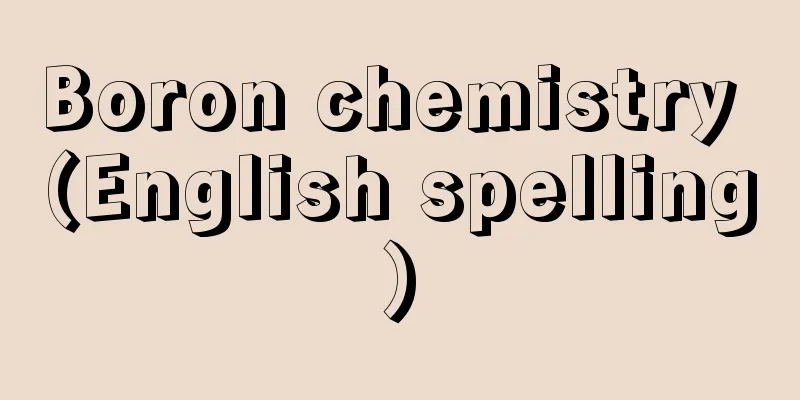Flatworms - Flatworms

|
A group of animals that make up the Platyhelminthes phylum in animal taxonomy. Their bodies are bilaterally symmetrical, dorsoventrally flat, and oval or elongated. The surface of the body is covered with cilia (autogenous) or cuticle (parasitic). They are not divided into segments, have no body cavity, and their digestive, reproductive, and excretory organs are contained within the soft tissue. They have no circulatory, respiratory, or skeletal systems. Their digestive system consists of the mouth, pharynx, and intestines, but often lacks an anus. Some have complexly branched intestines. Acoelenterates of the Turbellaria class lack intestines, but have food vacuoles in the soft tissue that come together to digest food. Cestoda class lack any digestive system at all, but their body surface is densely covered with small projections similar to the intestinal villi of vertebrates, through which they absorb nutrients. They have a central nervous system, and in self-active ones the sensory organs are well developed, but parasitic adults lack these. They are generally hermaphroditic, with two individuals mating and exchanging sperm. Their reproductive organs are well developed and have a complex structure. In addition to the ovaries which produce egg cells, they have yolk glands which produce yolk cells, and the eggs are compound eggs containing one egg cell and many yolk cells, the latter providing the nutrients necessary for the development of the egg cells. Trematodes and Cestoda have complex developmental cycles, have intermediate hosts, and some reproduce as larvae. The phylum Platyhelminthes is divided into the following four classes: (1) Turbellaria: They are self-active and live in seawater, freshwater, and wetlands, moving by crawling using cilia covering the abdomen. In addition to sexual reproduction, some species reproduce asexually by dividing their bodies. Although they have no direct connection to human life, they act as "scavengers" by eating animal carcasses and decaying matter. Some species feed on oysters and clams. These include planaria, planarians, and giant billfish. (2) Monogenea: Formerly included in the Trematode class, they have now been promoted to an independent class. They parasitize the gills and body surface of fish, but some also parasitize the urinary bladder of amphibians. Their body structure is similar to that of trematodes. They have attachment organs at the anterior and posterior ends of the body, and the attachment organ at the posterior end is particularly well developed, with numerous hooks, suckers, and clothespin-like grasping organs. Their developmental cycle does not require an intermediate host like that of trematodes, and they do not have an alternation of generations. For this reason, if fish are raised in overcrowded conditions, such as in fish farms, they can cause large-scale outbreaks and cause disease. For example, D. fasciata. (3) Trematode class: Many species parasitize the digestive tract of vertebrates, but some species parasitize the accessory glands, liver, kidneys, and blood vessels. They have a non-segmented body with two suckers as attachment organs. They have a complex developmental cycle, alternating generations and switching hosts. Examples include Fasciola hepatica, Liver Fluke, Yokogawa Fluke, and Schistosoma japonicum. (4) Cestoda: These parasites live in the digestive tract of vertebrates. Their body is segmented, with each segment housing the male and female reproductive organs. The head end has a sucker or hook as an attachment organ. The digestive organs have degenerated. The developmental cycle is complex, and the larvae metamorphose as they change hosts. Examples include the Japanese Sea Diphyllobothrium tapeworm, Taenia solium, and Taenia saginata. [Masaaki Machida] Source: Shogakukan Encyclopedia Nipponica About Encyclopedia Nipponica Information | Legend |
|
動物分類学上一門Platyhelminthesを構成する動物群。体は左右相称で背腹に平たく、長円形ないし細長い。体表は繊毛(自活性のもの)あるいはクチクラ(寄生性のもの)で覆われる。体節に分かれず、体腔(たいこう)はなく、消化器、生殖器、排出器などは柔組織の中に収まっている。循環器、呼吸器、骨格はない。消化器は口、咽頭(いんとう)、腸からなるが、肛門(こうもん)を欠くことが多い。腸は複雑に分岐するものもある。渦虫綱の無腸類は腸を欠くが、柔組織内に食胞があり、これが集まって食物を消化する。条虫綱は消化器をまったく失っているが、体表には脊椎(せきつい)動物の腸絨毛(じゅうもう)のような小突起が密生し、これを通して栄養を吸収する。神経は中枢部をもち、自活性のものでは感覚器などがよく発達するが、寄生性の成虫では欠如する。一般に雌雄同体で、2個体が交接して互いに精子を交換する。生殖器はよく発達し、複雑な構造をもつ。卵細胞を生産する卵巣のほかに、卵黄細胞を生産する卵黄腺(せん)があり、卵は1個の卵細胞と多数の卵黄細胞を入れた複合卵で、後者は卵細胞の発育に必要な栄養物質を供給する。吸虫綱や条虫綱では発育環が複雑で、中間宿主をもち、幼生生殖を営むものもある。扁形動物門は次の4綱に分けられる。 (1)渦虫綱 自活性で、海水、淡水、湿地で生活し、腹面を覆う繊毛を使って這(は)うように移動する。有性生殖のほかに、体が分裂して無性的に増えるものもある。ヒトの生活と直接かかわりをもたないが、「掃除屋」として動物の死骸や腐敗物を食べる。カキやアサリなどを食害する種もある。プラナリア、ナミウズムシ、コウガイビルなど。 (2)単生綱 かつては吸虫綱に含まれていたが、現在は独立した綱に昇格した。魚のえらや体表に寄生するが、両生類の膀胱(ぼうこう)に寄生するものもある。体の構造は吸虫類に似ている。体の前・後端に固着器を備え、とくに後端の固着器はよく発達し、多数の鉤(かぎ)、吸盤、洗濯挟み状の把握器(はあくき)をもつ。発育環には、吸虫類のような中間宿主を必要とせず、世代交代は行わない。このため、養魚場のように過密状態で魚を飼育すると、大発生して病害をもたらすことがある。フタゴムシなど。 (3)吸虫綱 脊椎動物の消化管に寄生するものが多いが、その付属腺(せん)や肝臓、腎臓、血管内に寄生する種もある。分節のない体に固着器として二つの吸盤をもつ。発育環は複雑で、世代交代や宿主転換を行う。肝蛭(かんてつ)、肝吸虫、横川(よこがわ)吸虫、日本住血吸虫など。 (4)条虫綱 脊椎動物の消化管に寄生する。体は片節が連なった分節状で、各片節に雌雄の生殖器を収める。頭端には固着器として吸盤、鉤などをもつ。消化器は退化。発育環は複雑で、幼虫は宿主変換に伴って変態する。日本海裂頭条虫、有鉤(ゆうこう)条虫、無鉤条虫など。 [町田昌昭] 出典 小学館 日本大百科全書(ニッポニカ)日本大百科全書(ニッポニカ)について 情報 | 凡例 |
>>: Malunion - Henkeiichiyu (English spelling)
Recommend
Cold food powder (English spelling)
This powdered medicine was widely taken during the...
Anser erythropus (English spelling)
… [Yanagisawa Norio]. … *Some of the terminology ...
Appeal - Sogan
The previous term for the act of requesting a spe...
Akeris, E.
…American Elizabeth Achelis founded the World Cal...
Itsukinosono - Itsukinosono
…His real surname was Hashimura, his given name w...
Ahaara - Ah ha ha
…The kingdom was ruled by vassals such as rajas, ...
barque
…It has several jibs at the bow, staysails betwee...
UNEP - UNEP
(United Nations Environment Program) Abbreviation ...
Tsuji
〘 noun 〙 (variation of "tsumuji")① A pla...
National Boxing Association
…Sugar Ray Robinson (USA, 1921-89), who was a fiv...
Ukrug - Ukrug
...The player supports the instrument by placing ...
Movement (Korean literature) - gakusho
… [Middle Ages - Goryeo Dynasty] The civil servic...
"The Novels of Qiaoshan"
…In the history of literature, he is famous as th...
Arrest on a different charge - Bekken Taiho
Investigative method in which a person is arreste...
Male and female mosaic - Female mosaic
Also known as sexual mosaicism. A single animal ha...









